Performance of a Solar Absorption Cooling System Using Nanofluids and a Membrane-Based Microchannel Desorber
Abstract
Featured Application
Abstract
1. Introduction
2. Materials and Methods
2.1. Membrane-Based Desorber
2.2. Nanofluids
2.3. Solar Thermal Facility
3. Results and Discussion
4. Conclusions
Author Contributions
Funding
Conflicts of Interest
Nomenclature
| C1 | cost of the first module (€) |
| Cp | specific heat (J/kg·K) |
| CT | total cost of the desorber (€) |
| e | height or thickness (m) |
| i | specific enthalpy (kJ/kg) |
| I | solar irradiation (W/m2) |
| ID | inside diameter (m) |
| J | desorption rate (kg/m2·s) |
| k | thermal conductivity (W/m·K) |
| l | width (m) |
| L | total length of channels (m) |
| mass flow rate (kg/s) | |
| NT | total number of modules |
| OD | outside diameter (m) |
| P | pressure (Pa) |
| q | thermal power (W) |
| r | ratio between property of nanofluid and base fluid |
| x | lithium bromide mass fraction (kgLiBr/kgnf) |
| Greek Symbols | |
| αd | volume fraction of nanoparticles |
| ε | porosity |
| µ | dynamic viscosity (Pa·s) |
| ρ | density (kg/m3) |
| Subscripts | |
| a | ambient, absorber |
| bf | base fluid |
| c | condenser |
| d | nanoparticle, desorber |
| e | evaporator |
| hw | hot water |
| i | inlet |
| k | thermal conductivity |
| l | liquid |
| m | membrane, average |
| nf | nanofluid |
| o | outlet |
| sat | saturation |
| T | total |
| u | useful |
| v | vapour |
| w | wall |
References
- Asfand, F.; Bourouis, M. A review of membrane contactors applied in absorption refrigeration systems. Renew. Sust. Energ. Rev. 2015, 45, 173–191. [Google Scholar] [CrossRef]
- Berdasco, M.; Coronas, A.; Vallès, M. Theoretical and experimental study of the ammonia/water absorption process using a flat sheet membrane module. Appl. Therm. Eng. 2017, 124, 477–485. [Google Scholar] [CrossRef]
- Jakob, U.; Kohlenbach, P. Recent Developments of Sorption Chillers in Europe. IIR Bull. 2010, 5, 34–40. [Google Scholar]
- Ghiasi, C.; Martí-Calatayud, M.; Weimer, T.; Ziegler, F. Ammonia-water absorption heat pumps with membrane absorber. In Proceedings of the IIR Conference Ammonia Refrigeration Technology, Ohrid, Macedonia, 7–9 May 2009. [Google Scholar]
- Schaal, F.; Hasse, H.; Weimer, T.; Mattes, H. Experimental investigation of cooled membrane absorbers in an absorption refrigerator. In Proceedings of the German Refrigeration and Air Conditioning Meeting, Hannover, Germany, 21–23 November 2007; pp. 245–263. [Google Scholar]
- Chen, J.; Chang, H.; Chen, S.R. Simulation study of a hybrid absorber–heat exchanger using hollow fiber membrane module for the ammonia–water absorption cycle. Int. J. Refrig. 2006, 29, 1043–1052. [Google Scholar] [CrossRef]
- Sudoh, M.; Takuwa, K.; Iizuka, H.; Nagamatsuy, K. Effects of thermal and concentration boundary layers on vapour permeation in membrane distillation of aqueous lithium bromide solution. J. Membr. Sci. 1997, 131, 1–7. [Google Scholar] [CrossRef]
- Drost, K.; Liburdy, J.; Paul, B.; Peterson, R. Enhancement of Heat and Mass Transfer in Mechanically Constrained Ultra Thin Films. DOE Final Report FC36-01GO11049; Oregon State Univ.: Corvallis, OR, USA, 2005. [Google Scholar]
- Thorud, J.D.; Liburdy, J.A.; Pence, D.V. Microchannel membrane separation applied to confined thin film desorption. Exp. Therm. Fluid. Sci. 2006, 30, 713–723. [Google Scholar] [CrossRef]
- Wang, Z.; Gu, Z.; Feng, S.; Li, Y. Application of vacuum membrane distillation to lithium bromide absorption refrigeration system. Int. J. Refrig. 2009, 32, 1587–1596. [Google Scholar] [CrossRef]
- Isfahani, R.N.; Sampath, K.; Moghaddam, S. Nanofibrous membrane-based absorption refrigeration system. Int. J. Refrig. 2013, 36, 2297–2307. [Google Scholar] [CrossRef]
- Isfahani, R.N.; Fazeli, A.; Bigham, S.; Moghaddam, S. Physics of lithium bromide (LiBr) solution dewatering through vapour venting membranes. Int. J. Multiph. Flow 2014, 58, 27–38. [Google Scholar] [CrossRef]
- Ibarra-Bahena, J.; Dehesa-Carrasco, U.; Montiel-González, M.; Romero, R.J.; Basurto-Pensado, M.A.; Hernández-Cristóbal, O. Experimental evaluation of a membrane contactor unit used as a desorber/condenser with water/Carrol mixture for absorption heat transformer cycles. Exp. Therm. Fluid. Sci. 2016, 76, 193–204. [Google Scholar] [CrossRef]
- Ibarra-Bahena, J.; Dehesa-Carrasco, U.; Romero, R.J.; Rivas-Herrera, B.; Rivera, W. Experimental assessment of a hydrophobic membrane-based desorber/condenser with H2O/LiBr mixture for absorption systems. Exp. Therm. Fluid. Sci. 2017, 88, 145–159. [Google Scholar] [CrossRef]
- Ibarra-Bahena, J.; Rivera, W.; Romero, R.J.; Montiel-González, M.; Dehesa-Carrasco, U. Novel intermittent absorption cooling system based on membrane separation process. Appl. Therm. Eng. 2018, 136, 718–729. [Google Scholar] [CrossRef]
- Ibarra-Bahena, J.; Venegas-Reyes, E.; Galindo-Luna, Y.R.; Rivera, W.; Romero, R.J.; Rodríguez-Martínez, A.; Dehesa-Carrasco, U. Feasibility analysis of a membrane desorber powered by thermal solar energy for absorption cooling systems. Appl. Sci. 2020, 10, 1110. [Google Scholar] [CrossRef]
- Venegas, M.; García-Hernando, N.; de Vega, M. Experimental evaluation of a membrane-based microchannel desorber operating at low desorption temperatures. Appl. Therm. Eng. 2020, 167, 114781. [Google Scholar] [CrossRef]
- Kim, Y.J.; Joshi, Y.K.; Fedorov, A.G. An absorption based miniature heat pump system for electronics cooling. Int. J. Refrig. 2008, 31, 23–33. [Google Scholar] [CrossRef]
- Bigham, S.; Isfahani, R.N.; Moghaddam, S. Direct molecular diffusion and micro-mixing for rapid dewatering of LiBr solution. Appl. Therm. Eng. 2014, 64, 371–375. [Google Scholar] [CrossRef]
- Hong, S.J.; Hihara, E.; Dang, C. Novel absorption refrigeration system with a hollow fiber membrane-based generator. Int. J. Refrig. 2016, 67, 418–432. [Google Scholar] [CrossRef]
- Venegas, M.; De Vega, M.; García-Hernando, N.; Ruiz-Rivas, U. Simplified model of a membrane-based rectangular micro-desorber for absorption chillers. Int. J. Refrig. 2016, 71, 108–123. [Google Scholar] [CrossRef]
- Venegas, M.; García-Hernando, N.; De Vega, M. A parametric analysis on the effect of design and operating variables in a membrane-based desorber. Int. J. Refrig. 2019, 99, 47–58. [Google Scholar] [CrossRef]
- Kang, Y.T.; Kim, H.J.; Lee, K.I. Heat and mass transfer enhancement of binary nanofluids for H2O/LiBr falling film absorption process. Int. J. Refrig. 2008, 31, 850–856. [Google Scholar] [CrossRef]
- Kim, H.; Jeong, J.; Kang, Y.T. Heat and mass transfer enhancement for falling film absorption process by SiO2 binary nanofluids. Int. J. Refrig. 2012, 35, 645–651. [Google Scholar] [CrossRef]
- Jung, J.Y.; Kim, E.S.; Nam, Y.; Kang, Y.T. The study on the critical heat flux and pool boiling heat transfer coefficient of binary nanofluids (H2O/LiBr + Al2O3). Int. J. Refrig. 2013, 36, 1056–1061. [Google Scholar] [CrossRef]
- Nourafkan, E.; Asachi, M.; Jin, H.; Wen, D.; Ahmed, W. Stability and photo-thermal conversion performance of binary nanofluids for solar absorption refrigeration systems. Renew. Energy 2019, 140, 264–273. [Google Scholar] [CrossRef]
- Zeiny, A.; Haruna, M.A.; Wen, D. Aqueous lithium bromide nanosolution for solar absorption refrigeration systems. AIP Conf. Proc. 2019, 2123, 020083. [Google Scholar]
- Lee, P.-S.; Garimella, S.V. Thermally developing flow and heat transfer in rectangular microchannels of different aspect ratios. Int. J. Heat Mass Transf. 2006, 49, 3060–3067. [Google Scholar] [CrossRef]
- Shah, R.K.; London, A.L. Laminar Flow Forced Convection in Ducts: A Source Book for Compact Heat Exchanger Analytical Data, Advances in Heat Transfer; Academic Press: NewYork, NY, USA, 1978. [Google Scholar]
- Bertsch, S.S.; Groll, E.A.; Garimella, S.V. A composite heat transfer correlation for saturated flow boiling in small channels. Int. J. Heat Mass Transf. 2009, 52, 2110–2118. [Google Scholar] [CrossRef]
- Taylor, R.; Krishna, R. Multicomponent Mass Transfer; John Wiley & Sons: New York, NY, USA, 1993. [Google Scholar]
- Ali, A.H.H.; Schwerdt, P. Characteristics of the membrane utilized in a compact absorber for lithium bromide-water absorption chillers. Int. J. Refrig. 2009, 32, 1886–1896. [Google Scholar] [CrossRef]
- Norris, R.H.; Schenectady, M.Y.; Streid, D.D. Laminar-flow heat-transfer coefficients for ducts. Trans. ASME 1940, 62, 525–533. [Google Scholar]
- Ganapathy, H.; Shooshtari, A.; Dessiatoun, S.; Ohadi, M.M.; Alshehhi, M. Hydrodynamics and mass transfer performance of a microreactor for enhanced gas separation processes. Chem. Eng. J. 2015, 266, 258–270. [Google Scholar] [CrossRef]
- Mittermaier, M.; Schulze, P.; Ziegler, F. A numerical model for combined heat and mass transfer in a laminar liquid falling film with simplified hydrodynamics. Int. J. Heat Mass Transf. 2014, 70, 990–1002. [Google Scholar] [CrossRef]
- Mason, E.A.; Malinauskas, A.P. Gas Transport in Porous Media: The Dusty-Gas Model; Elsevier: New York, NY, USA, 1983. [Google Scholar]
- Iversen, S.B.; Bhatia, V.K.; Dam-Johansen, K.; Jonsson, G. Characterization of microporous membranes for use in membrane contactors. J. Membr. Sci. 1997, 130, 205–217. [Google Scholar] [CrossRef]
- Klein, S.A. EES—Engineering Equation Solver, Professional Version V10.612-3D, F-Chart Software. Available online: http://fchart.com (accessed on 6 March 2019).
- Herold, K.E.; Radermacher, R.; Klein, S.A. Absorption Chillers and Heat Pumps; CRC Press: Boca Raton, FL, USA, 1996; p. 246. [Google Scholar]
- Alawi, O.A.; Sidik, N.A.C.; Xian, H.W.; Kean, T.H.; Kazi, S.N. Thermal conductivity and viscosity models of metallic oxides nanofluids. Int. J. Heat Mass Transf. 2018, 116, 1314–1325. [Google Scholar] [CrossRef]
- Kamyar, A.; Saidur, R.; Hasanuzzaman, M. Application of Computational Fluid Dynamics (CFD) for nanofluids. Int. J. Heat Mass Transf. 2012, 55, 4104–4115. [Google Scholar] [CrossRef]
- Pradhan, N.R.; Duan, H.; Liang, J.; Iannacchione, G.S. The specific heat and effective thermal conductivity of composites containing single-wall and multi-wall carbon nanotubes. Nanotechnology 2009, 20, 245705. [Google Scholar] [CrossRef]
- Heyhat, M.M.; Kowsary, F.; Rashidi, A.M.; Alem Varzane Esfehani, S.; Amrollahi, A. Experimental investigation of turbulent flow and convective heat transfer characteristics of alumina water nanofluids in fully developed flow regime. Int. Commun. Heat Mass Transf. 2012, 39, 1272–1278. [Google Scholar] [CrossRef]
- Koo, J.; Kleinstreuer, C. A new thermal conductivity model for nanofluids. J. Nanopart. Res. 2004, 6, 577–588. [Google Scholar] [CrossRef]
- Yu, W.; Choi, S.U.S. The role of interfacial layers in the enhanced thermal conductivity of nanofluids: A renovated Maxwell model. J. Nanopart. Res. 2003, 5, 167–171. [Google Scholar] [CrossRef]
- Hamilton, R.L.; Crosser, O.K. Thermal conductivity of heterogeneous two component systems. Ind. Eng. Chem. Fundam. 1962, 1, 182–191. [Google Scholar] [CrossRef]
- Pak, B.C.; Cho, Y.I. Hydrodynamic and heat transfer study of dispersed fluids with submicron metallic oxide particles. Exp. Heat Transf. 1998, 11, 151–170. [Google Scholar] [CrossRef]
- Brinkman, H. The viscosity of concentrated suspensions and solutions. J. Chem. Phys. 1952, 20, 571. [Google Scholar] [CrossRef]
- PlasmaChem Nanomaterials and related products. In Catalogue & Price-List, 3rd ed.; Schulte Elektrotechnik GmbH & Co. KG: Lüdenscheid, Germany, 2018; ISBN 978-3-00-034019-2.
- Vaillant. Available online: https://www.vaillant.es/downloads/nuevos/solar-201012-cc-248220.pdf (accessed on 7 April 2020).
- Jung, J.Y.; Cho, C.; Lee, W.H.; Kang, Y.T. Thermal conductivity measurement and characterization of binary nanofluids. Int. J. Heat Mass Transf. 2011, 54, 1728–1733. [Google Scholar] [CrossRef]
- Companiadeluz. Available online: https://companiadeluz.es/info/tarifas (accessed on 7 April 2020).
- MediaMarkt. Available online: https://www.mediamarkt.es/es/product/_aire-acondicionado-lg-32pluswf09-19-db-dual-inverter-blanco-1474702.html (accessed on 7 April 2020).
- Gasfriocalor. Available online: https://www.gasfriocalor.com/captador-solar-vaillant-aurotherm-vfk-135-vd (accessed on 7 April 2020).
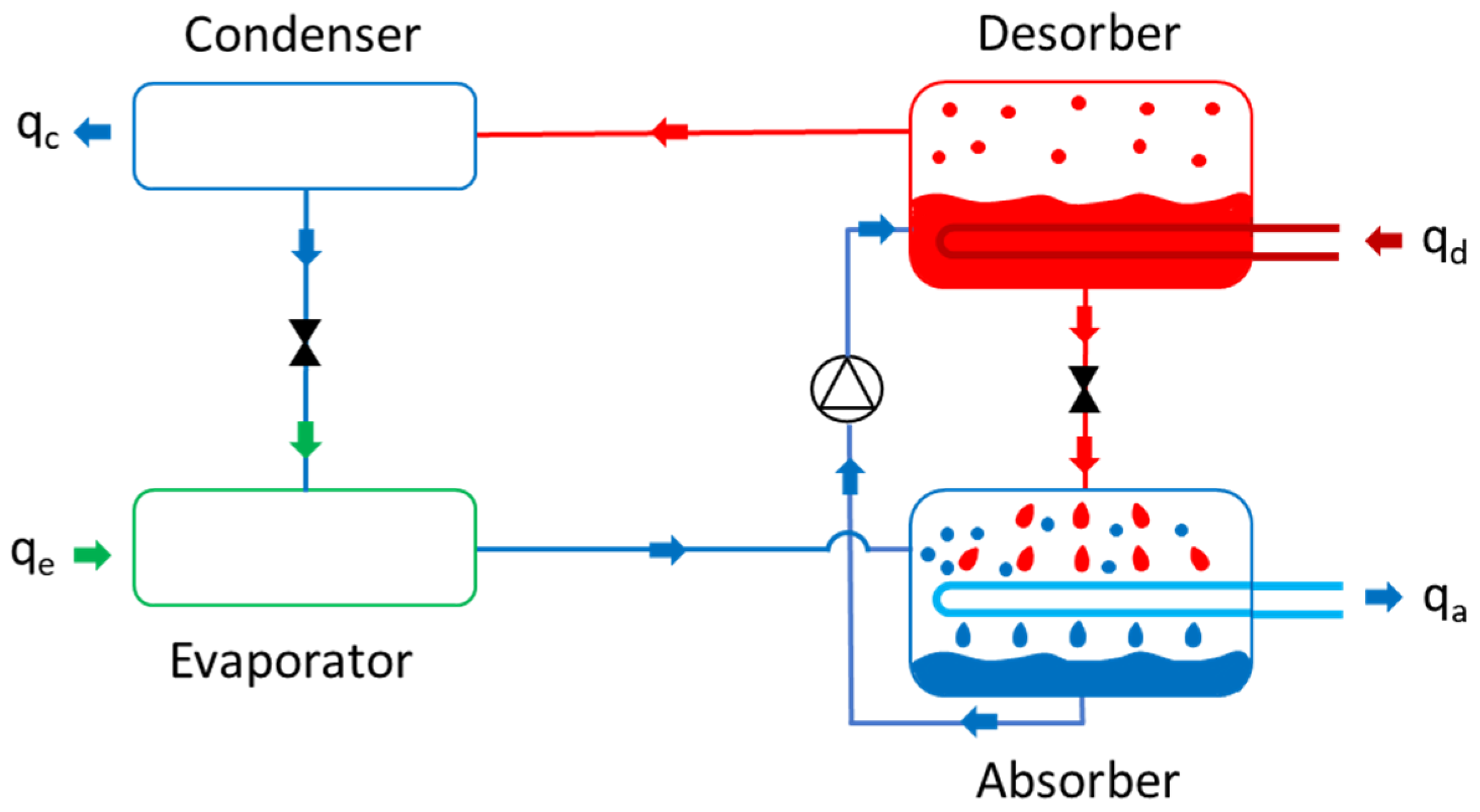

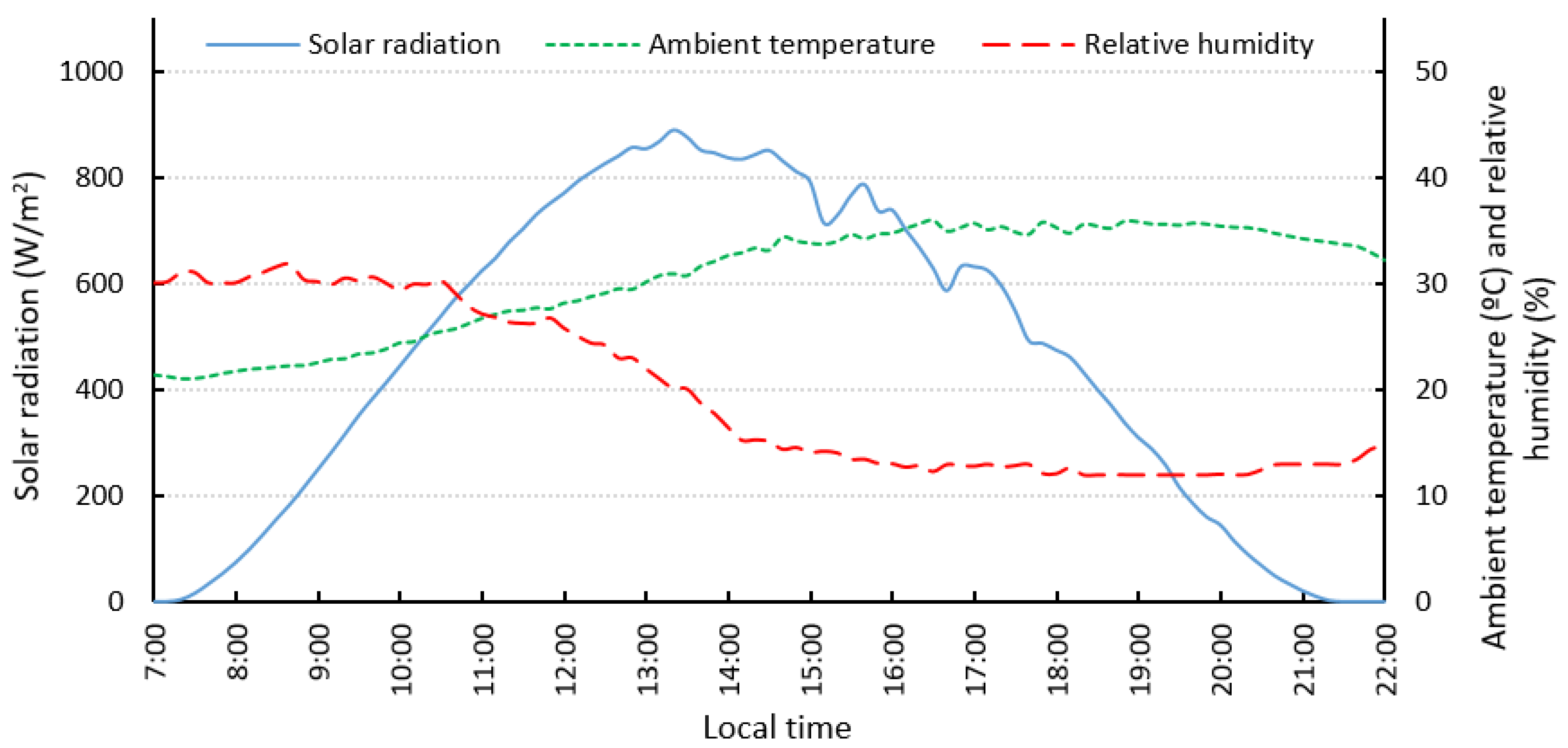

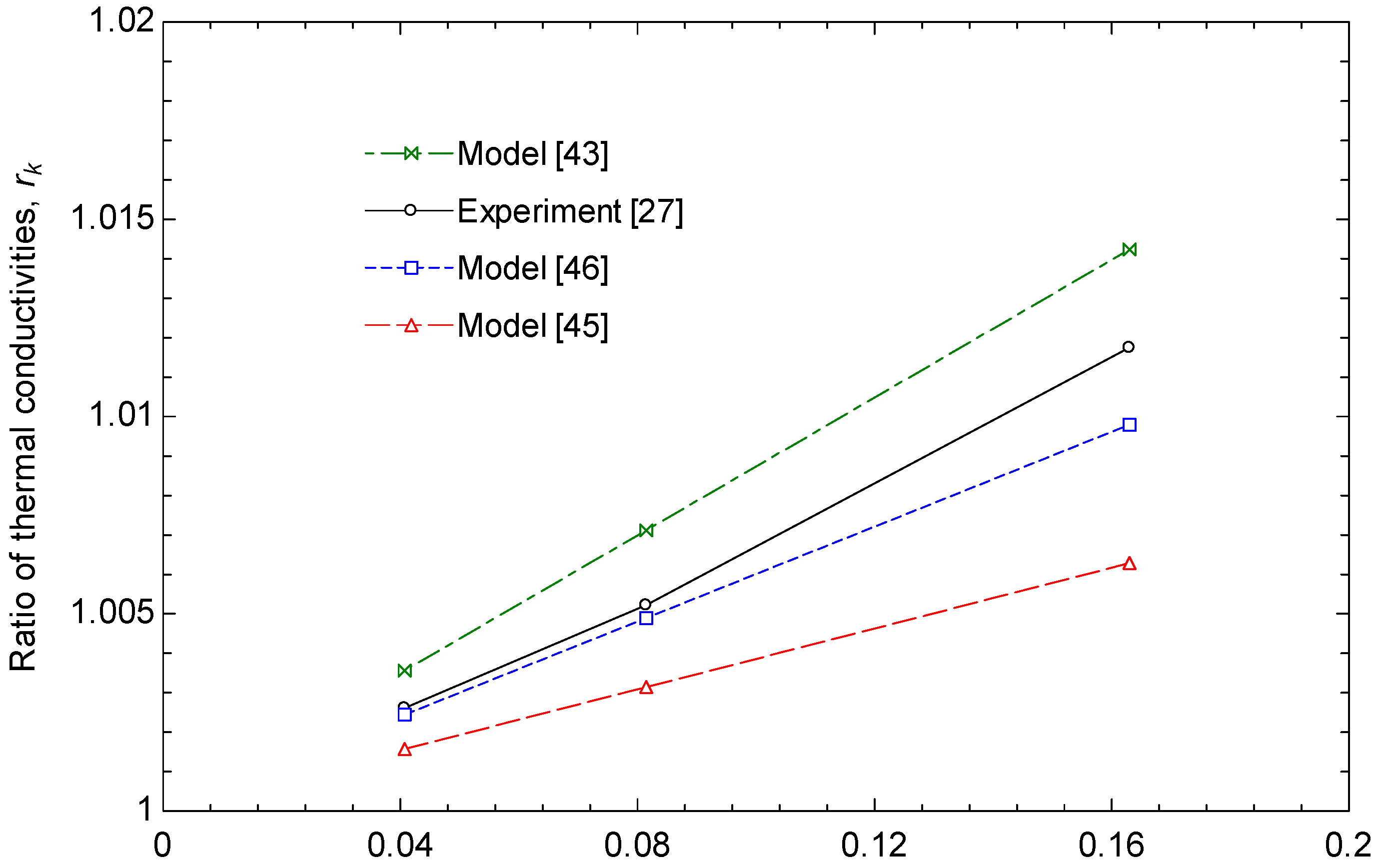

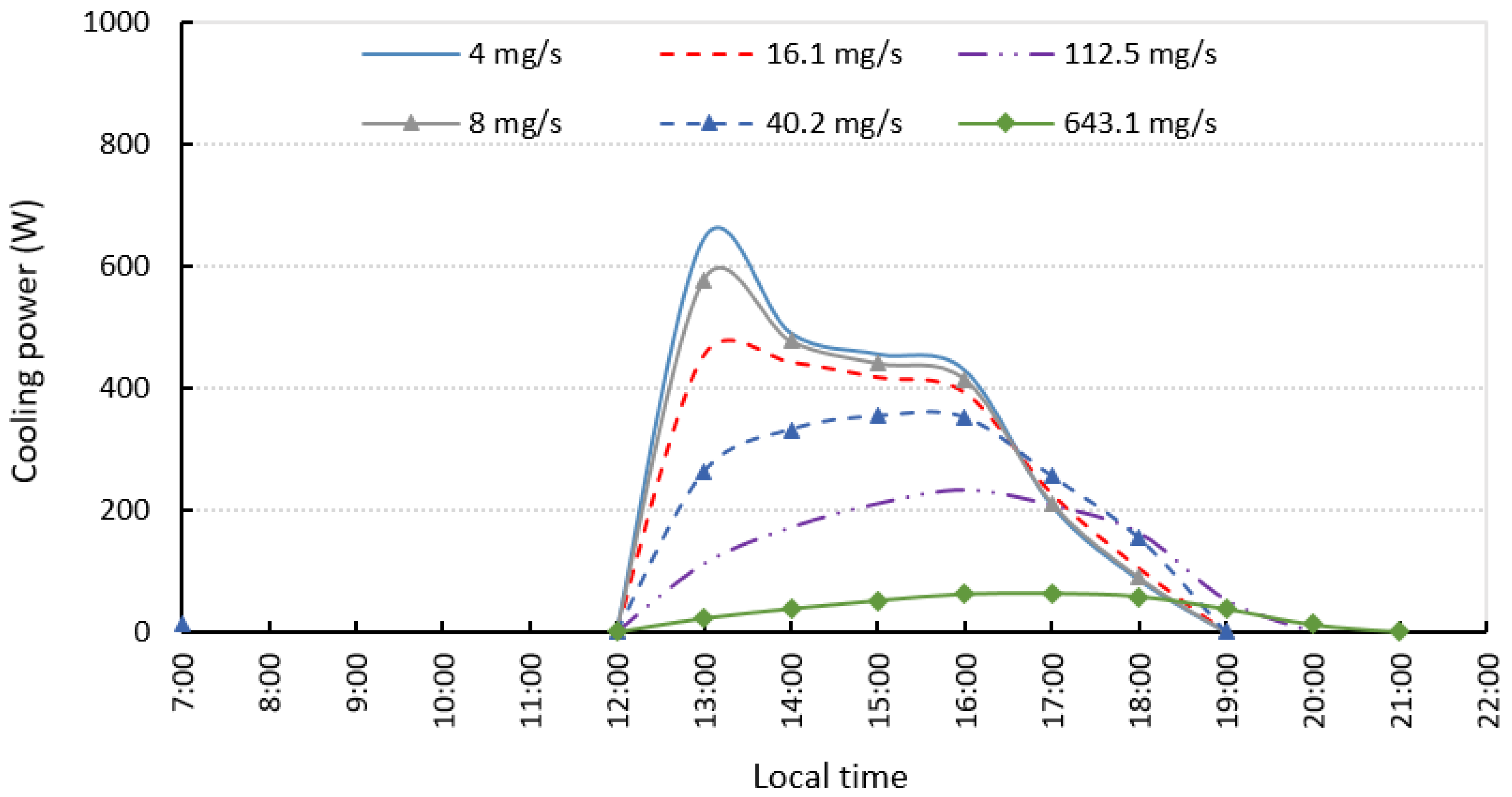



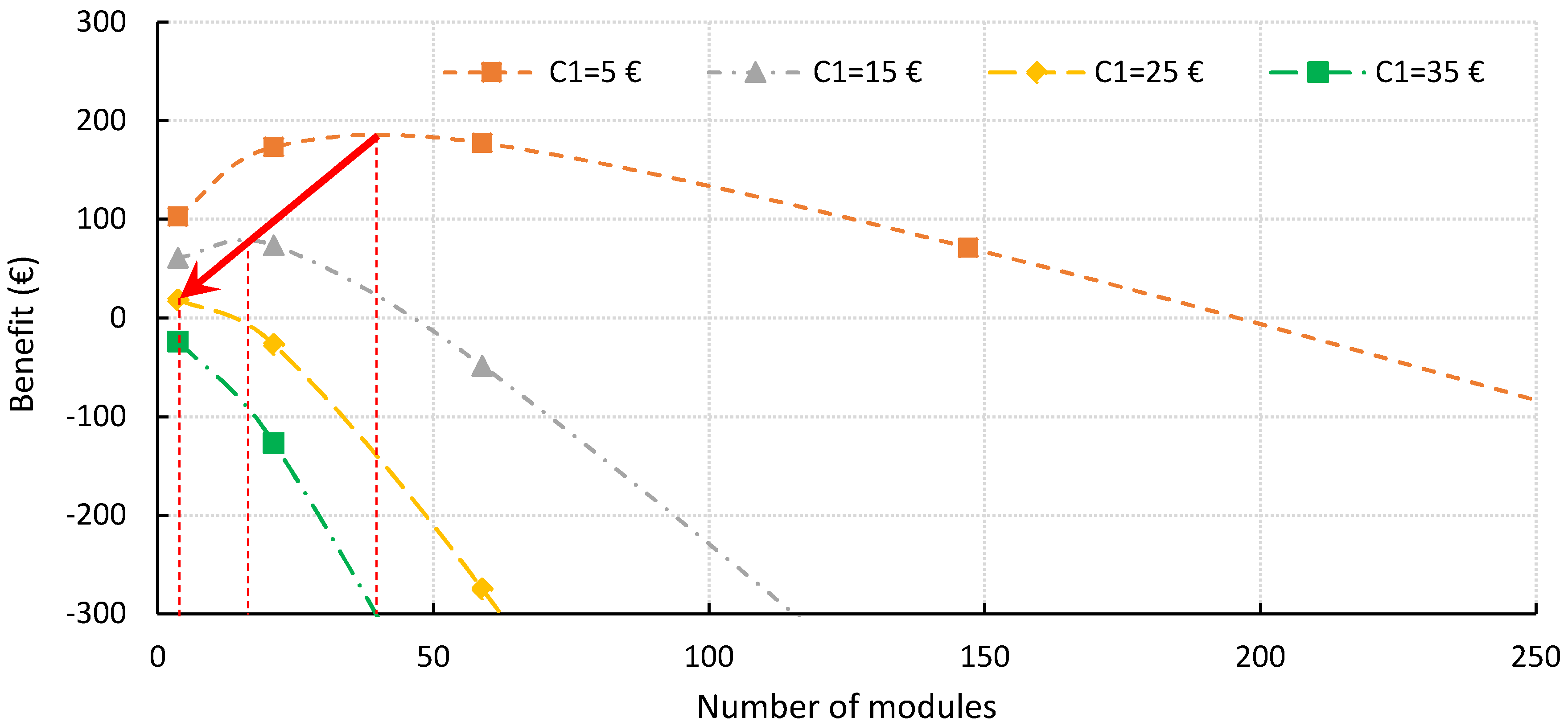
| Parameter | Value |
|---|---|
| Inlet temperature of the hot water, Thw (°C) | 75 |
| Inlet temperature of the nanofluid, Tnf (°C) | 65 |
| Pore diameter of the membrane, dp (µm) | 1 |
| Nanofluid pressure, Pnf (kPa) | 5.5 |
| Vapour pressure, Pv (kPa) | 5.5 |
| Porosity of the membrane, ε | 0.8 |
| Height of the hot water channel, ehw (mm) | 0.15 |
| Wall thickness, ew (mm) | 2.7 |
| Height of the nanofluid channel, enf (mm) | 0.15 |
| Thickness of the membrane, em (µm) | 60 |
| Height of the vapour channel, ev (mm) | 5 |
| Centre-to-centre distance between nanofluid channels (mm) | 1.6 |
| Centre-to-centre distance between hot water channels (mm) | 1.6 |
| Width of hot water channel, lhw (mm) | 1.5 |
| Width of nanofluid channel, lnf (mm) | 1.5 |
| Width of vapour channel, lv (mm) | 20 |
| Channel length, L (mm) | 50 |
| Length of discretized element, dz (mm) | 0.27 |
| Total inlet flow rate of nanofluid, mnf,T (g/s) | 0.5 |
| Total flow rate of hot water, mhw,T (g/s) | 0.5 |
| Inlet vapour flow rate, mv (g/s) | 0 |
| Inlet LiBr concentration, x | 0.55 |
| Property | Al2O3 | CuO | CNT | |||
|---|---|---|---|---|---|---|
| Value | Source | Value | Source | Value | Source | |
| k (W/m·K) | 40 | [40] | 20 | [40] | 3000 | [41] |
| ρ (kg/m3) | 3970 | [40] | 6500 | [40] | 1350 | [41] |
| Cp (J/kg·K) | 765 | [40] | 535.6 | [40] | 800 | [42] |
| Property | Sources |
|---|---|
| k | [43,44,45,46] |
| ρ, Cp | [47] |
| µ | [48] |
| Parameter | Al2O3 | CuO | CNT |
|---|---|---|---|
| Diameter (nm) | 40 | 40 | - |
| ID (nm) | - | - | 2–6 |
| OD (nm) | - | - | 5–20 |
| Length (µm) | - | - | 1–10 |
| Specific surface (m2/g) | >10 | >10 | 240 |
| Purity (%) | >99.8 | >99 | min. 95 |
| Cost (€/kg) | 1042.8 | 2153.8 | 3839 |
| Mass Flow Rate through the Channels (mg/s) | Number of Desorber Modules (with Data of Table 1) |
|---|---|
| 4 | 588 |
| 8 | 294 |
| 16.1 | 147 |
| 40.2 | 58.8 |
| 112.5 | 21 |
| 643.1 | 3.7 |
© 2020 by the authors. Licensee MDPI, Basel, Switzerland. This article is an open access article distributed under the terms and conditions of the Creative Commons Attribution (CC BY) license (http://creativecommons.org/licenses/by/4.0/).
Share and Cite
Venegas, M.; García-Hernando, N.; Zacarías, A.; de Vega, M. Performance of a Solar Absorption Cooling System Using Nanofluids and a Membrane-Based Microchannel Desorber. Appl. Sci. 2020, 10, 2761. https://doi.org/10.3390/app10082761
Venegas M, García-Hernando N, Zacarías A, de Vega M. Performance of a Solar Absorption Cooling System Using Nanofluids and a Membrane-Based Microchannel Desorber. Applied Sciences. 2020; 10(8):2761. https://doi.org/10.3390/app10082761
Chicago/Turabian StyleVenegas, María, Néstor García-Hernando, Alejandro Zacarías, and Mercedes de Vega. 2020. "Performance of a Solar Absorption Cooling System Using Nanofluids and a Membrane-Based Microchannel Desorber" Applied Sciences 10, no. 8: 2761. https://doi.org/10.3390/app10082761
APA StyleVenegas, M., García-Hernando, N., Zacarías, A., & de Vega, M. (2020). Performance of a Solar Absorption Cooling System Using Nanofluids and a Membrane-Based Microchannel Desorber. Applied Sciences, 10(8), 2761. https://doi.org/10.3390/app10082761







